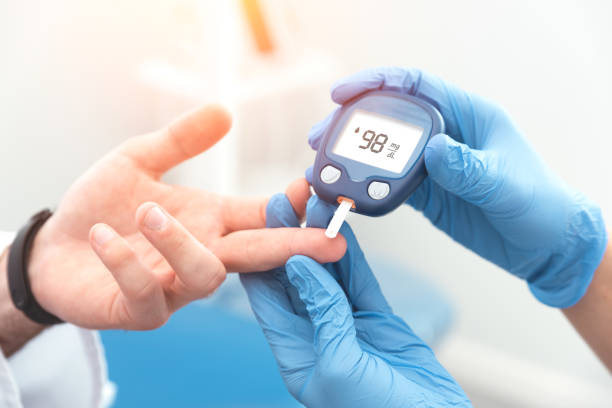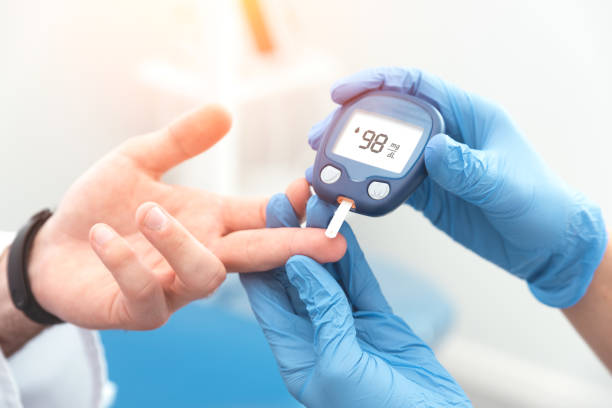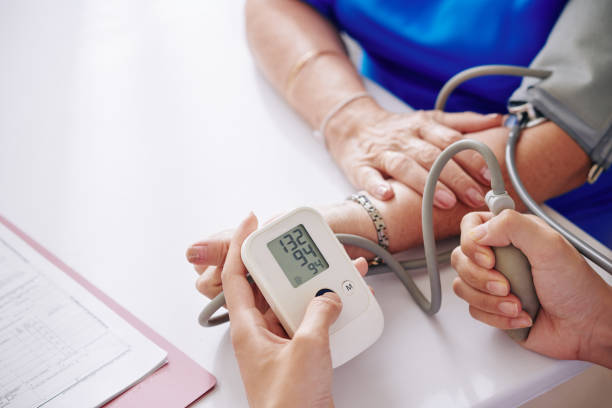Nursing care plan for diabetes mellitus
Use this guide to help you formulate nursing interventions for diabetes mellitus, a nursing care plan for diabetes mellitus, and a nursing diagnosis.
This condition is distinguished by hyperglycemia. There are two types of diabetes: type 1 diabetes mellitus and type 2 diabetes mellitus. Type 2 diabetes makes up 90% of all cases.
DM can also be classified as gestational diabetes, drug-induced diabetes, or monogenic diabetes. Diabetes complications affect all body systems and might have fatal consequences.
Types of diabetes mellitus
The most common types of diabetes are
Type 1 diabetes:
Type 1 also known as juvenile diabetes or insulin-dependent diabetes:
This is a type of diabetes that occurs as a result of the pancreas not being able to produce insulin or producing very little of it.
The symptoms of type 1 diabetes include
- Excessive urination(polyuria)
- Fatigue
- Vision change
- Constant hunger (polyphagia)
- Weight loss
- Excessive thirst (polydipsia), etc.
Type 2 diabetes:
This is most common in adults and this type of diabetes occurs as a result of the body’s resistance to insulin or the inability of the body to make use of the insulin produced by the body…
Read Also: Nursing Care Plan For COPD

Causes of Diabetes
The main cause of diabetes is idiopathy, that is to say, it is not known but it is believed that the following are the risk factors for developing diabetes: Family history, hereditary, environmental factors, age, high cholesterol, race, geography, high blood pressure, physical inactivity, weight. Etc
SIGNS AND SYMPTOMS OF DIABETES
The common signs and symptoms of diabetes are:
- Polydipsia
- Polyuria
- Polyphagia,
- Unexplained
- Weight loss,
- Fatigue,
- Blur vision,
- Frequent infection,
- Slow wound healing, irritability,
- presence of ketone in urine (nail polish smell in the urine as a result of the body burning its fat instead of glucose).
How is diabetes diagnosed?
Glycated Hemoglobin (A1C) Test:
This test is used to measure a 2-3 month average of one’s blood sugar level and the percentage of blood sugar attached to the hemoglobin.
Fasting Plasma Glucose Test:
Oral Glucose Tolerance Test:
Here an individual will first fast overnight then the blood sugar level is checked in the morning after that a sugary substance is given to the individual to drink and the blood sugar level is checked periodically for the next 2 hours.
Read Also: Nursing Care Plan For Hypertension
A blood sugar level of 7.8mmol/L is said to be normal, 7.8mmol/L – 11.0 mmol/L is pre-diabetes and 11.1 mmol/L is diabetes.
Random Blood Sugar Test:
This is taken at a random time whether the individual has eaten or not and the blood sugar level result of 11.1mmll/L shows an individual is diabetic.
Management of Diabetes mellitus
Diabetes treatment is multifaceted.
Patients will very certainly be started on diabetes medicines. This could include oral medicines and/or insulin injections.
Finally, diet is an important element of diabetes treatment, and patients will require extensive education on items suited for a diabetic diet as well as how to efficiently and precisely monitor carbohydrates.
Ways of Controlling/Preventing diabetes mellitus
Listed below are the ways you can control your blood sugar.
- Keep an accurate record of blood sugar charts.
- To control your blood sugar, your plate of food should have at least ¼% grain, for example, Acha grains which we will be talking about in this book, ¼% of protein, water, and ½% of vegetables.
- Always ensure you take enough fiber in your meal as this will help reduce blood sugar levels.
- Exercise regularly.
- Cut down on alcohol intake.
- Reduce your carbohydrate intake.
- Always ensure to have enough sleep and rest.
- Check your weight.
- Reduce fat intake.
- Always take enough water.
- Ensure to take your diabetic drugs as prescribed.
- Maintain healthy body weight.
- Eat a healthy diet
- Avoid smoking.
COMPLICATIONS OF UNCONTROLLED DIABETES
Uncontrolled high blood sugar can lead to so many complications which we are going to look at according to the various body systems.
- Circulatory/Cardiovascular system:
The complications that may arise in the circulatory system as a result of high blood sugar include stroke, atherosclerosis, angina, high cholesterol, heart disease, and increased risk of high blood pressure.
- Digestive system:
Increased blood sugar levels in the body over time can lead to vagus nerve damage in the stomach which will result in gastroparesis; a condition in which the stomach is not able to do its normal function which can be characterized by feeling full easily when eating, abdominal pain, vomiting, etc.
Another complication is diabetic ketoacidosis which is the buildup of acid in the blood when the blood sugar is high for a long time.
Excretory system:
Over time uncontrolled high blood sugar can damage the blood vessels found or cluster in the kidney and this will result in the kidney being unable to perform its functions thus resulting in kidney damage, kidney failure, etc.
- Integumentary system:
Some of the effects of diabetes on the skin include
Digital sclerosis (thickening and tightening the skin of the fingers that appears waxy), diabetic dermopathy (spot on the skin), eruptive xanthomatosis (small yellow-red bumps on the skin ), folliculitis (a condition in which the hair follicles become inflamed ), ulcer, amputations, infections.
- Auditory system:
Hearing impairment.
- Nervous system:
Some of the effects of high blood sugar on the nervous system are neuropathy (tingling sensation, numbness, pains); retinopathy, etc.
- Delayed wound healing due to increased blood sugar levels which affects nerve function, circulation, and immunity, and these, in turn, affect how long the wound will take to heal.
Read Also: Nursing Care Plan For FEVER
Nursing Care Plan For Diabetes Mellitus
Diabetes nursing care planning goals include successful therapy to normalize blood glucose levels and reduce complications through insulin replacement, a balanced diet, and exercise.
Through good patient education, the nurse should emphasize the significance of adhering to the specified treatment program.
Make your instruction specific to the patient’s requirements, talents, and developmental stage.
Emphasize the importance of blood glucose control in long-term health.
The most common nursing diagnosis for patients with diabetes mellitus are listed below:
- Risk for Unstable Blood Glucose Level
- Deficient Knowledge
- Compromised Family Coping
- Risk for Infection
- Risk for Disturbed Sensory Perception
- Risk for Ineffective Therapeutic Regimen Management
- Risk for Injury
- Imbalanced Nutrition: Less Than Body Requirements
- Risk for Deficient Fluid Volume
- Fatigue
- Risk for Impaired Skin Integrity
Diabetes mellitus nursing care plan 1: Nursing Diagnosis
- Risk for Unstable Blood Glucose Level
- Related to
- Inadequate knowledge of diabetes management
- Ineffective blood glucose monitoring
- Lack of acceptance of the diagnosis
- Lack of adherence to diabetes management
- Insulin deficiency or excess
Desired outcome:
The patient will maintain a blood glucose reading of less than 180 mg/dL; fasting blood glucose levels of less than <140 mg/dL; hemoglobin A1C level of <7%.a
The Patient will acknowledge key factors that may contribute to unstable glucose levels
Nursing Intervention/Rationale
Assess for signs and symptoms of hypoglycemia: Hypoglycemic episodes are exceedingly harmful and need to be treated right away.
Assess for signs and symptoms of hyperglycemia: Knowledge about the signs and symptoms of hyperglycemia will allow for prompt administration of medication when necessary
Monitor blood glucose: Proper monitoring of blood sugar levels helps prevent hypoglycemia or hyperglycemia. It also helps to know the type of regimen to use in the management of individual patient cases and when need is for adjustment of regime plan.
Administer prescribed diabetic medications (oral and insulin): The administration of prescribed medication will assist in the proper management of diabetes and the maintenance of healthy blood sugar levels.
Check This: Nursing care plan for pneumonia
Monitor carbohydrate intake: Blood glucose levels will increase because when carbs are digested by the body, they are converted to glucose and also By keeping track of the carbohydrates in each meal and snack, the right amount of insulin may be administered.
Assess the patient’s level of understanding/knowledge of the disease condition: This will assist you in learning about the additional knowledge required and enable you to determine the direction in which to direct the additional knowledge.
Health educate patient on chronic condition of diabetes mellitus: The patient’s total treatment strategy needs to include diabetic education and Education on diabetes’ causes, symptoms, hypoglycemia vs. hyperglycemia, and management techniques will help the patient feel more in control of a chronic condition and more empowered.
Thanks for going through our article! If you find this article helpful please share with friends and don’t forget to drop your comment.







